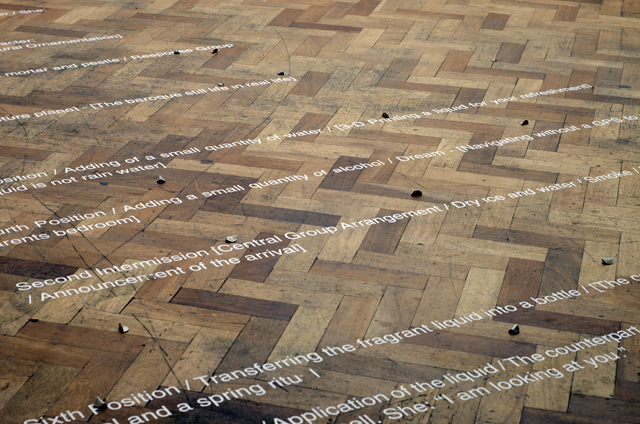Partners, a group exhibition of work by Darja Bajagić, Patrick Groth, Michael Handley, James Miller and Hans Jacob Schmidt at London’s Lima Zulu, is about a lot of things. It’s the name of a pub in New Haven, Connecticut, for one, immediately contextualising the content of the show and demanding meditation on its curation by Joseph Buckley. Conversation with the IJV co-founder, ex-director and now Yale School of Art colleague to the artists featured was challenging and to some degree, so was the exhibition. An air of familiarity required a prior knowledge of what was going on, and deciphering artistic practices within these relationships took time.
The friendship between the Partners artists (they came to know each other at a bar in New Haven, Connecticut of the same name) was certainly part of the curatorial process, and although its title stood as a constructed red herring, it was actually very apt. Rather than distracting the participant from the relevant themes within the show, it provided a familiar suggestion of the context, not only in which the show and works were created, but also in which we all exist. This might sound quite abstract –and in many ways, the main ideas behind the show were. The paradox of logistically putting together an exhibition in which the themes investigated stand without structure is a challenge that many curators are faced with, and Buckley certainly seemed to explore this.

It was partly about the process of putting together a show, and this issue of practicality grew from existing as a very modest concept into standing as a very important one. The organisation involved a lot of communication, and in this way the exhibition stands as a medium for conversation. As in any curated exhibition, the pieces themselves also communicated with each other. Upon entry, Hans Jacob Schmidt’s ‘Structural Ornament’ conspicuously dressed the show space floor with vinyl lettering, while the pressed and folded coins of Michael Handley’s ‘Daniel Predicted It?’ also took up the physical floor space that would usually be taken by a gallery visitor. On the wall of the single-room gallery, a small sculpture by Darja Bajagic, ‘ForScan Plasters (Fraud)’, facing two other paintings: ‘Book Cover #2’ by Patrick Groth, and ‘Untitled’, by James Miller. The space was smaller than expected, but provided an ideal platform for visitor and works to interact, and for such spatial conversation to develop. This process of moving through the latter as a way of getting to the former was especially striking, and certainly helps create the form of the exhibition.
Engaging in a shared conversation –a general conversation about any of the separate concepts operating in each work -puts artist and curator in the same creative framework, and the anonymity of both roles within this infrastructure was mentioned by Buckley as a point of interest. The ambiguity, and the disclosure of certain things, allowed for specifics to be recognised –and for a particular time and place to be highlighted within the relationships held by those involved. It’s no coincidence that you become friends with those you work with. The curator noted that he was mostly surprised by how much of himself he found in the art pieces; by what chimed within him throughout the curation of the show. Such elements of the work exist anyway and without being arranged, and for Buckley, much of his practice centred around allowing for these personal affiliations. By choosing not to control the work, he binds them together, highlighting the shared attitude that the pieces illustrate.
It is evident that Partners is more than a group exhibition in that it is a social position held by those involved. Although it might best enjoyed by those occupying said position, it maintained a bold and curious manner that has clearly been thoroughly worked through. It illustrates the pragmatics of Partners as a context, explicitly investigating curator-artist collaboration and process.













